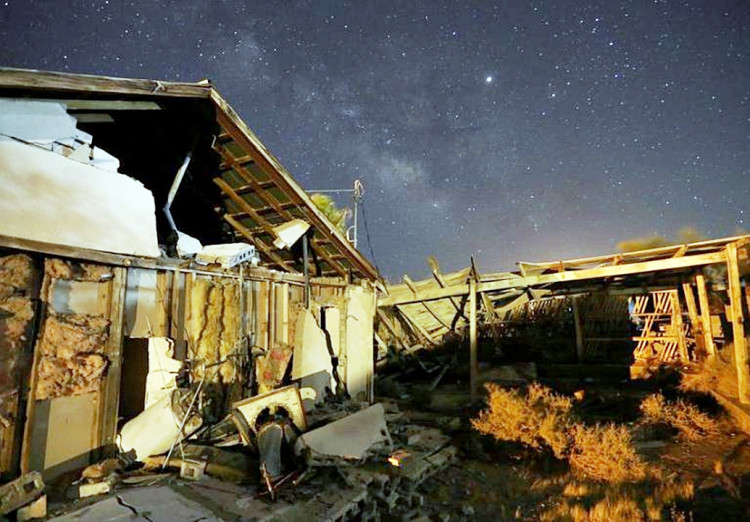Nervous Californians shaken by two huge earthquakes last week are bracing for the dreaded "Big One" that might devastate their state with a massive magnitude 8 or greater tremor.
Seismologists at the U. S. Geological Survey (USGS) are telling them there's a two percent chance the next earthquake will be stronger than the magnitude 7.1 quake that damaged Southern California on July 5 causing $100 million in damage.
This rolling and prolonged quake had its epicenter near the small city of Ridgecrest, which suffered damage but no deaths due to the quake.
A foreshock to the July 5 quake on July 4 measured a magnitude 7.4.
The question scaring Californians now is will the next one be the catastrophic and long-overdue "Big One" along the massive San Andreas Fault? USGS said the quake might hit as soon as this month.
"It's constant adrenaline," said Jason Corona, whose family owns a restaurant in Ridgecrest, "because we don't know if the little one is going to be the next big one."
USGS said the southern San Andreas Fault has typically seen large earthquakes every 150 years.
There hasn't been a Big One, or a magnitude 8.0 or greater quake, since the catastrophic magnitude 7.9 quakes that leveled San Francisco in 1906. Previous to this, a magnitude 7.9 earthquake in 1857 was located at the southern segment of the San Andreas Fault.
The southern segment of the San Andreas Fault is considered the likely location for the Big One in the future. The July 4 and 5 quakes occurred to the north of and far from the San Andreas Fault.
Californians continue to be nervous about the Big One, especially now.
"I would honestly say it's something Californians are always cognizant of because of the San Andreas Fault being here," said Steve Rios of Riverside to CNN. "We're standing on two different (sides) of the fault line. It's kind of a scary feeling."
Seismologists said last week's quakes probably won't increase the likelihood of a major earthquake at the San Andreas Fault. Dr. Lucy Jones, a seismologist with the California Institute of Technology, believes there's a two percent chance of the Big One occurring each year. That's about 1 in 20,000 every day, she said, but Californians should always be prepared.
"One should always be preparing for a Big One," she said.
In October 2015, Los Angeles passed extensive seismic regulations requiring thousands of buildings be retrofitted to withstand violent shaking. San Francisco passed a similar law in 2013.






